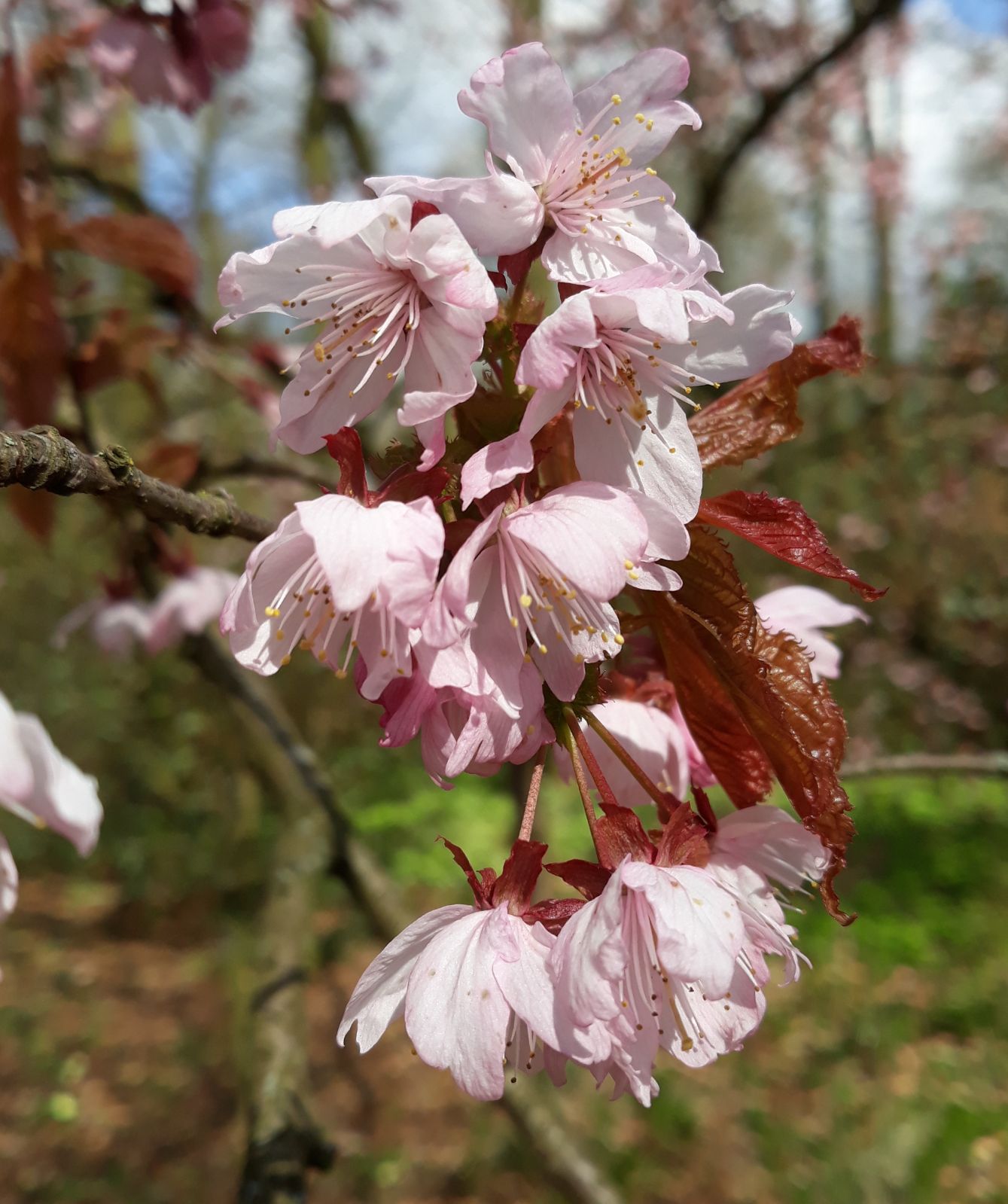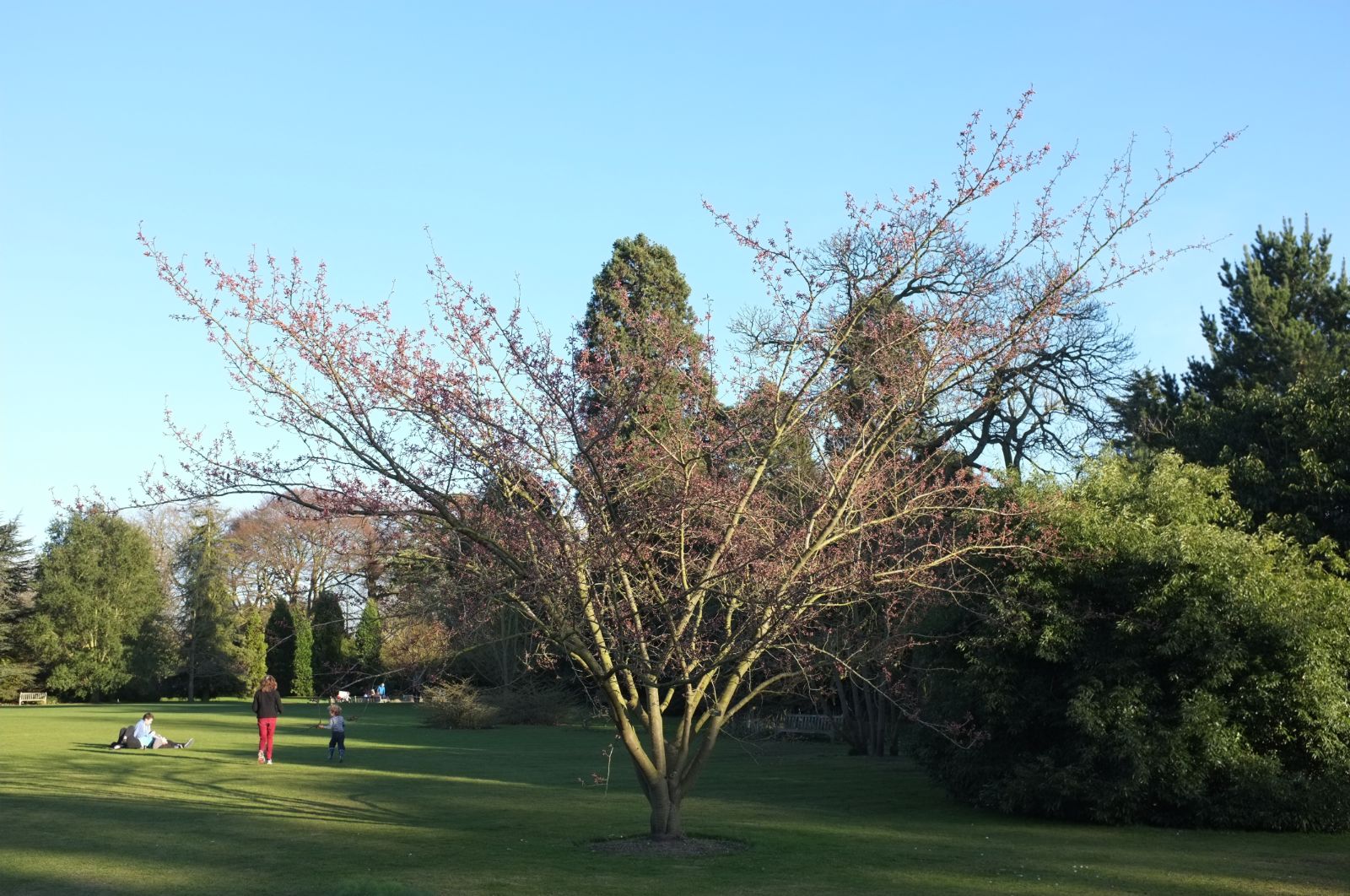Prunus dielsiana
Credits
Article from Bean's Trees and Shrubs Hardy in the British Isles
Recommended citation
'Prunus dielsiana' from the website Trees and Shrubs Online (treesandshrubsonline.
Genus
Infraspecifics
Other taxa in genus
- Prunus alleghaniensis
- Prunus americana
- Prunus × amygdalo-persica
- Prunus amygdalus
- Prunus angustifolia
- Prunus apetala
- Prunus arabica
- Prunus argentea
- Prunus armeniaca
- Prunus avium
- Prunus besseyi
- Prunus brigantina
- Prunus campanulata
- Prunus canescens
- Prunus cantabrigiensis
- Prunus cerasifera
- Prunus cerasus
- Prunus cocomilia
- Prunus concinna
- Prunus conradinae
- Prunus consociiflora
- Prunus cornuta
- Prunus cuthbertii
- Prunus dasycarpa
- Prunus davidiana
- Prunus × dawyckensis
- Prunus domestica
- Prunus dulcis
- Prunus emarginata
- Prunus × fontanesiana
- Prunus fruticosa
- Prunus glandulosa
- Prunus grayana
- Prunus himalaica
- Prunus hortulana
- Prunus humilis
- Prunus ilicifolia
- Prunus incana
- Prunus incisa
- Prunus jacquemontii
- Prunus kansuensis
- Prunus lannesiana
- Prunus laurocerasus
- Prunus litigiosa
- Prunus lusitanica
- Prunus maackii
- Prunus mahaleb
- Prunus maritima
- Prunus maximowiczii
- Prunus microcarpa
- Prunus mira
- Prunus mugus
- Prunus mume
- Prunus nigra
- Prunus nipponica
- Prunus orthosepala
- Prunus padus
- Prunus pensylvanica
- Prunus persica
- Prunus pilosiuscula
- Prunus prostrata
- Prunus pumila
- Prunus rufa
- Prunus salicina
- Prunus sargentii
- Prunus serotina
- Prunus serrula
- Prunus serrulata
- Prunus sibirica
- Prunus × sieboldii
- Prunus simonii
- Prunus sogdiana
- Prunus speciosa
- Prunus spinosa
- Prunus ssiori
- Prunus subcordata
- Prunus subhirtella
- Prunus takesimensis
- Prunus tangutica
- Prunus tenella
- Prunus tomentosa
- Prunus triloba
- Prunus virginiana
- Prunus × yedoensis
A deciduous cherry up to 30 ft high; young shoots glabrous. Leaves oval, obovate, or inclined to oblong, abruptly narrowed at the apex to a short slender point, rounded or slightly heart-shaped at the base, sharply and often doubly toothed, 3 to 7 in. long, 11⁄4 to 3 in. wide, glabrous above, distinctly downy beneath, especially on the midrib and veins; stalk 1⁄4 to 5⁄8 in. long, usually downy and furnished with one to three large glands. Flowers 1 in. wide, pink or white, produced before the leaves, three to six in a cluster, each on a hairy stalk 1⁄2 to 11⁄4 in. long. Calyx-tube bell-shaped, hairy, its reflexed awl-shaped lobes longer than the tube; petals narrowly oval, deeply notched at the end. Fruits globose, 1⁄3 in. wide, red. The flowers spring from the axis of an involucre of conspicuously glandular-fringed bracts. Bot. Mag., n.s., t. 174.
Native of W. Hupeh, China; introduced in 1907 by Wilson. It has about the same degree of beauty as the other wild cherries introduced by Wilson at the same time, but is rather distinct on account of the downy undersurface of its large leaves, the hairy flower-stalks, and the very glandular-edged bracts. Nearly related to it is:
P cyclamina Koehne
This was introduced by Wilson from the same region in 1907 and also in 1904 from W. Szechwan, when collecting for Messrs Veitch, in whose nursery it first flowered. It differs from P. dielsiana in the leaves being nearly or quite glabrous below, and in the glabrous leaf-stalk and calyx-tube. The flowers are a charming pink and a little over 1 in. wide, the oblong petals deeply notched at the end. The lobes of the calyx are longer than the tube and are much reflexed as in P. dielsiana; their resemblance to the recurved petals of a cyclamen suggested the specific name. Both species have very linear stipules about {1/2} in. long, conspicuously fringed with stalked glands.At The Grange, Benenden, Kent, P. cyclamina has made a small, spreading tree which attained a height of 18 ft in thirty years. It is quite hardy there and produces self-sown seedlings, but Capt. Ingram suggests it might be more vigorous if grafted on gean. Bot. Mag., n.s., t. 338.


